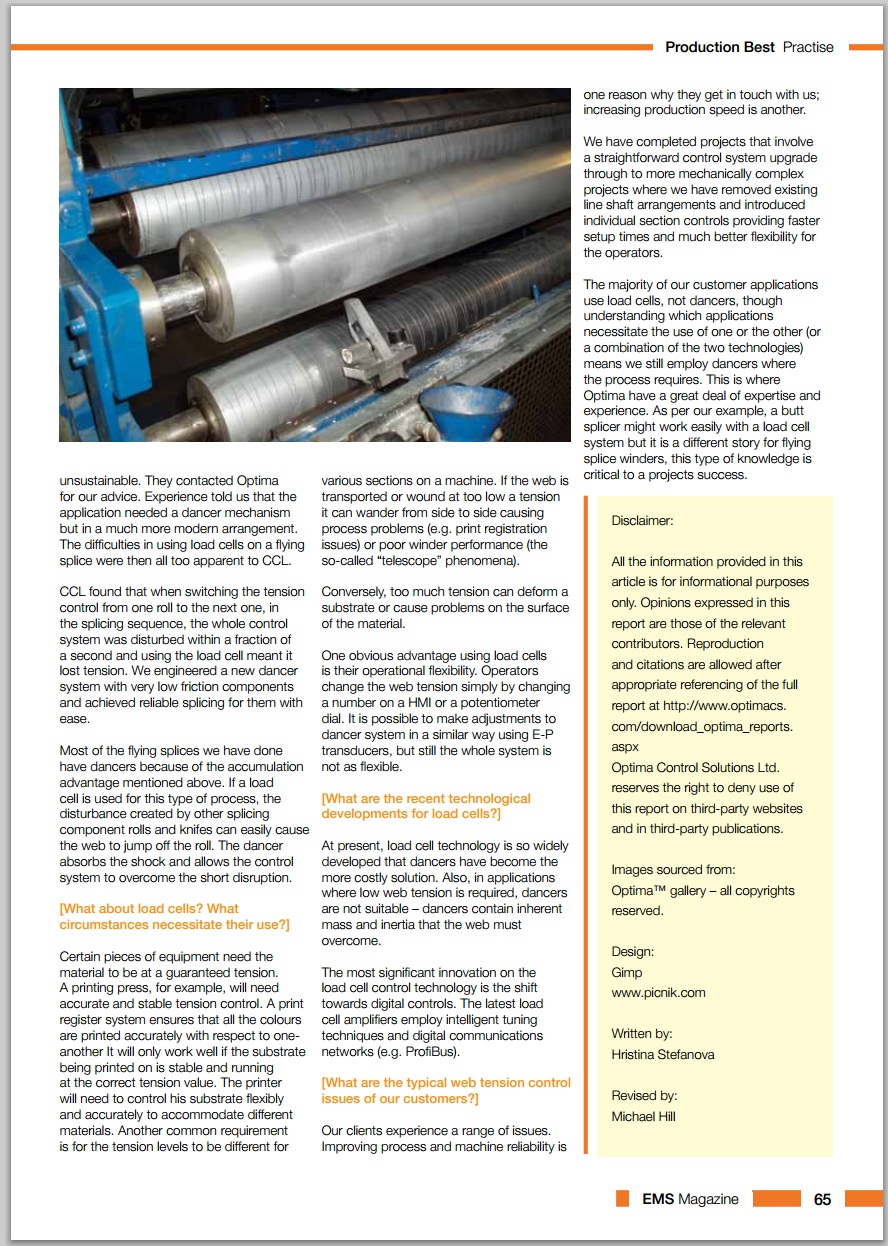Experts in the coverting and printing processes know how critical good tension
control is to their process and that tenslon can represent a single point of failure during
production.

In this article, one of Optima’s engineers discusses some best practises for effective web tension conrol and explain some of the techniques that are most effective.
Accurate and stable tension control on driven material ensures.
- Higher quality product
- Less scrap
- Improved productivity
- Higher production speeds
- Improved downtime and lower operating costs
Good web tension control systems ensure that no matter how demanding the production process is, the correct web tension is maintained for any type of material, at any point of the machine and at any speed.
Open Loop vs. Closed Loop Web tension control – What is the difference?
In an open-loop control system there is no direct tension feedback signal so controlled corrective action for any web tension variance is not possible. They operate on a predictive load basis.

In contrast, a closed loop tension system uses a signal that is proportional to the position of a feedback transducer (load cell or dancer mechanism) that is pre-tensioned as determined by the main process requirements. The control system uses a PID controller (proportional, integral and occasionally derivative) to affect the control of the web drive system.
Are there any benefits to using dancer control compared to loadcells?
The most appropriate example project I can think of is one that we supplied to a manufacture of high quality label stock. The machine was a continuous coating process and had a flying splice winder section. On this machine, someone had removed the original dancer mechanism that used fixed weights and replaced it with a load call arrangement. They believed that the load cell would provide better accuracy of measurement and greater control. The exact opposite effect occurred once the dancer had been bypassed. The machine would only splice for 1 out of 3 attempts but it was left in this condition for some time.
Optima became involved in the project, due to our knowledge in this area. Experience told us that the application needed a dancer mechanism, but in a much more modern arrangement and one that allowed a consistency of tension control setpoint and satisfactory web handling. We engineered a new dancer system that utilised very low friction components and achieved reliable splicing for them with ease.
Flying Splices need dancers then?
Most of the flying splices we have done have dancers because of the accumulation advantage mentioned above. If a loadcell is used for this type of process, the disturbance created by other splicing component rolls and knives can easily cause the web to jump off the roll. The dancer absorbs the shock and allows the control system to overcome this short disruption to the web caused by the splicing action.
What about load cells? What circumstances necessitate their use?
Certain machine and processes require the material to be at a set and stable tension.
A printing press, for example, will need accurate and stable tension control. A print register system ensures that all the colours are printed accurately with respect to one another. The machine will only work well if the substrate being printed on is stable and running at the correct tension value.
What are the recent technological developments for load cells?
The most significant innovation is the shift towards digital controls. The very latest amplifiers utilise intelligent tuning technology and can feedback the signals in a digital drift-free format with no signal lag or degredation.


